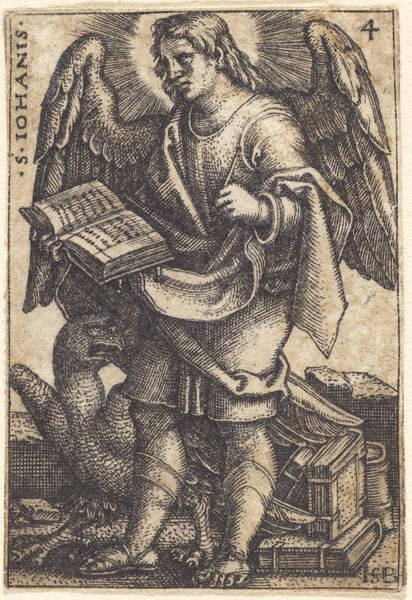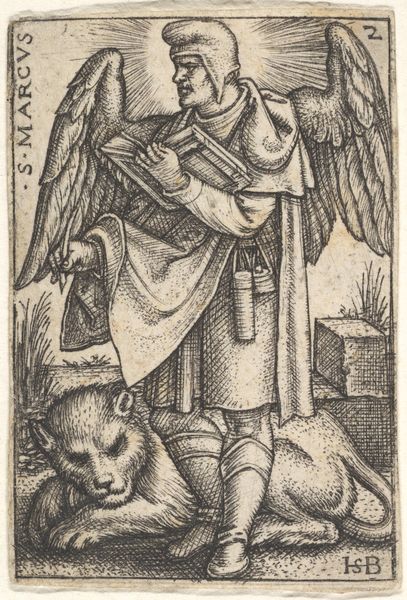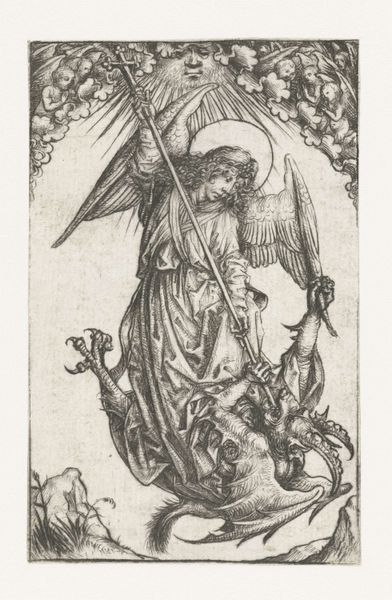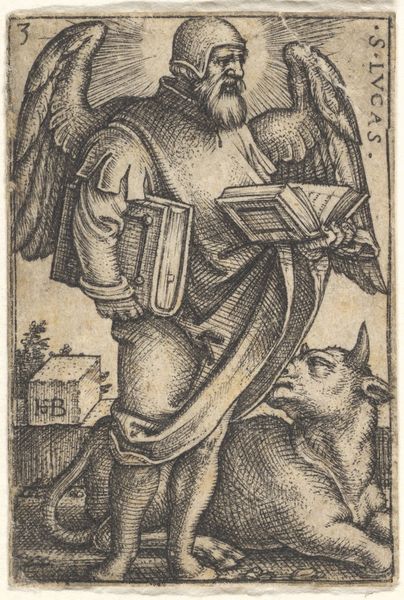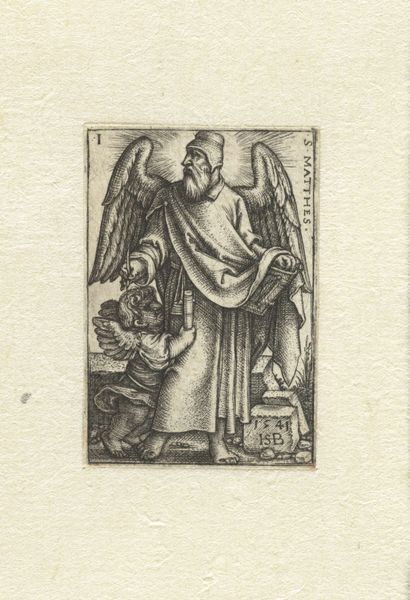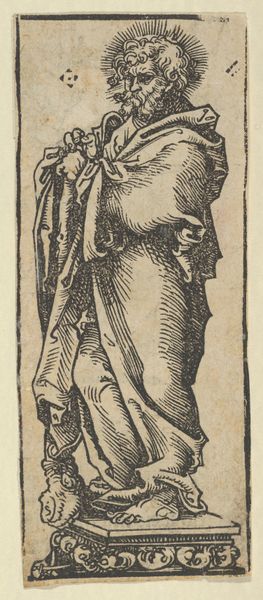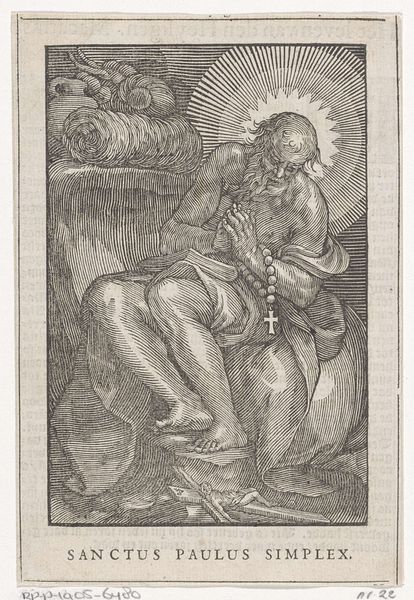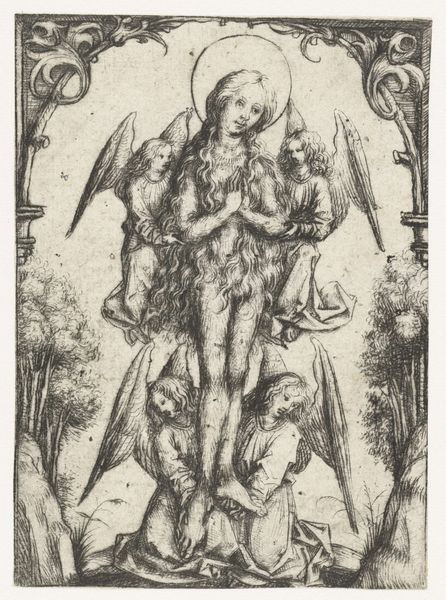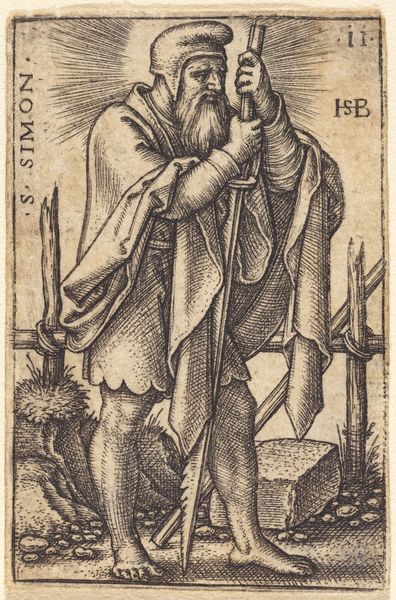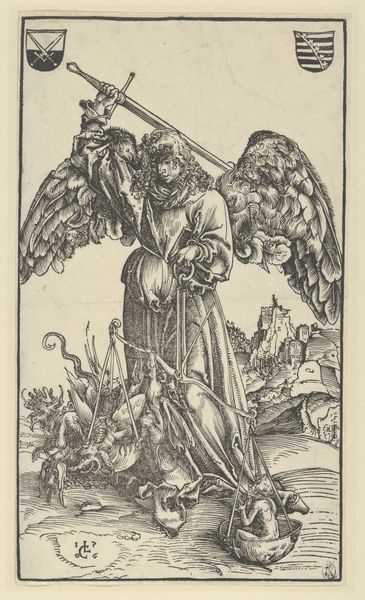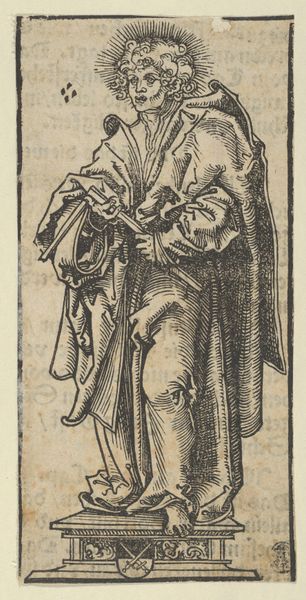
Plate 1: Saint Matthew with his head turned in profile to the left, a cherub at bottom left, from 'The four evangelists' 1541
0:00
0:00
drawing, print, engraving
#
portrait
#
drawing
# print
#
figuration
#
northern-renaissance
#
engraving
Dimensions: Sheet: 1 5/8 x 1 1/8 in. (4.2 x 2.9 cm)
Copyright: Public Domain
Editor: Here we have Sebald Beham's "Plate 1: Saint Matthew with his head turned in profile to the left, a cherub at bottom left, from 'The four evangelists'," made in 1541. It's a very detailed engraving. The angel wings sprouting from Saint Matthew seem a bit imposing. What strikes you most about it? Curator: The tension between the divine and the human is immediately apparent, isn't it? Note how Beham places Saint Matthew—a human figure—within this powerful, symbolic framework of angel wings and cherubic support. In the context of the Reformation, this interplay becomes quite pointed. How might the work reflect on the individual's access to divine knowledge? Editor: That's interesting. I hadn't thought about the Reformation's influence. The cherub seems almost burdened, rather than helpful, in supporting the tools. Is that deliberate? Curator: Absolutely. Consider the radical shifts in religious authority at the time. Who interprets the divine word? Who holds the quill? Is it Matthew, aided by divine inspiration, or is the institutional church mediating this process? The slight slump of the cherub, struggling with the implements of scripture, might suggest a critique of overly mediated or encumbered faith. Editor: So, it's not just a portrait, but a commentary on the changing religious landscape? The symbolism seems so deliberate. Curator: Precisely. Beham wasn't simply depicting a saint, he was engaging with deeply political and theological debates about authority, interpretation, and access to the sacred. Consider the power dynamics represented in this small engraving; it provides a lens through which we can interrogate the era's social tensions. Editor: That makes me look at it in a totally new way. It's far more radical than I initially thought. Curator: And that's the beauty of art; it provides ongoing opportunities for reinterpretation and reflection.
Comments
No comments
Be the first to comment and join the conversation on the ultimate creative platform.
